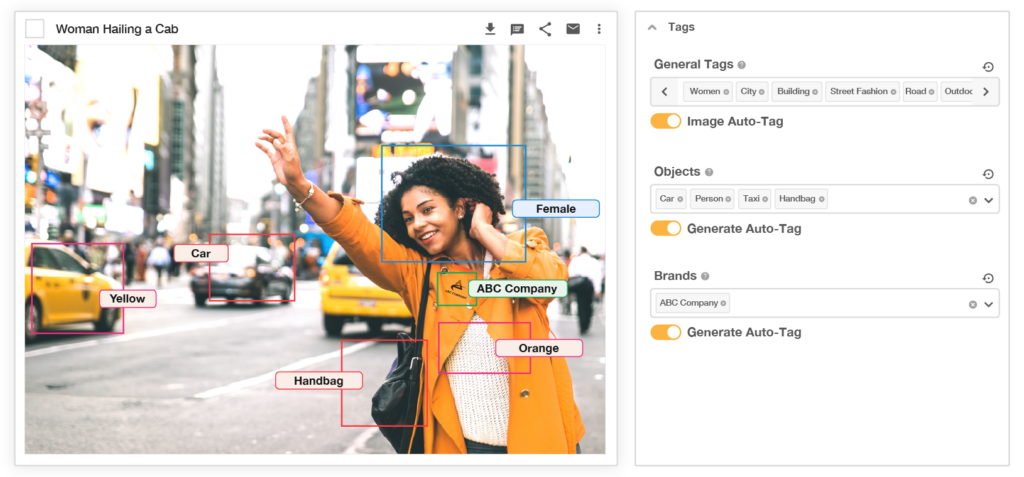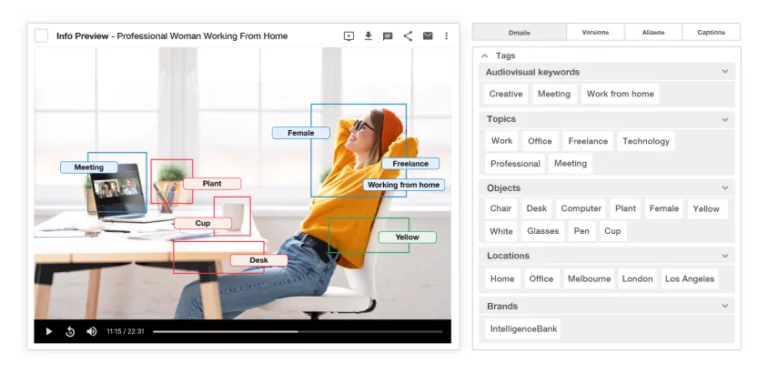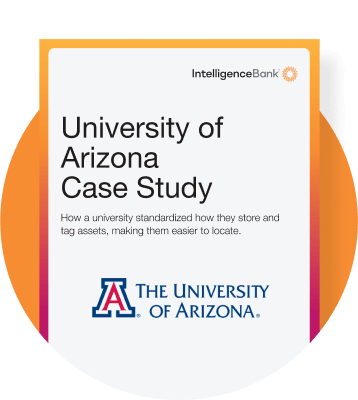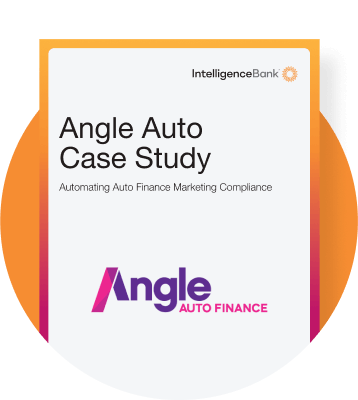There are many roles in marketing that, right now, AI can’t replace – things like original creative and strategic thinking and relationship building. But using AI to handle creative assets within a Digital Asset Management (DAM) system is a whole other story. Here’s how AI can transform a DAM, making it smarter, faster and more effective.
AI features in a DAM
Automated tagging with AI
Prior to AI, one of the most labor-intensive tasks involved in managing digital assets was having to manually tag them. AI has significantly reduced this burden by automatically adding searchable tags to photos, videos, and audio files based on a range of criteria:
- Facial recognition: AI algorithms can recognize faces in images and automatically tag individuals. This makes staff or talent image searches infinitely easier.
- Object recognition: AI automatically identifies objects within an image or video making it easier to categorize and perform a granular search for specific content. It even allows you to search by color.
- Brand logo recognition: AI automatically has the ability to recognize and tag assets containing logos. This makes for far easier asset retrieval – especially when you are managing a number of sub-brands.
- Location/Landmark recognition: AI can identify landmarks or locations within images and video, helping you categorize assets based on their geographical classification.

Speech-to-Text in video and audio
Most video content currently produced contains closed captions, AKA subtitles, as they are often viewed with sound off. Having the ability to generate these captions instantly within your DAM is a massive time saver. It’s a great tool to bring archival footage up to date with today’s standards, and has the added benefit of making it more accessible to hearing impaired people. The inclusion of closed captions also makes videos easier to find and navigate.
Auto cropping
If assets need to be cropped, AI can automatically identify the focal point of an image and crop to ensure the asset maintains its visual appeal. This is immensely helpful when you have a large bank of images that need bulk cropping. There is no need for additional software and no waiting around for a designer to slot the task into their daily workflow.
Benefits of using AI features in DAM
Now you know what AI features are available in DAM, let’s delve a little deeper into the tangible benefits these capabilities bring to your marketing team.
Increased speed
Time is of the essence in marketing, particularly these days. An AI-powered DAM significantly accelerates many of the more mundane roles that previously required manual effort.
- Faster tagging: Manually tagging each asset is time-consuming. With AI, this task is done for you, allowing you to quickly categorize and retrieve assets. Of course, you can always manually add extra tags if you want to add more information.
- Reduced repetitive tasks: Imagine having to download or share 100 images that need cropping to a particular size specification for web or socials? Using AI to crop images automatically eliminates the need to perform this task individually, saving you hours of work.
- Instant closed captions: In the past, creating closed captions for videos and audio could take hours. With AI, this process is reduced to a matter of seconds, making your content more accessible to a broader audience. This is invaluable, particularly if your company has a large bank of archives.
- Improved asset search speed: AI-driven tagging enhances the speed and accuracy of asset searches. Find what you need within seconds, rather than sifting through a sea of untagged files.
- Enhanced efficiency: By automating time-consuming tasks, a DAM with AI capabilities frees up your team to focus on more strategic and creative endeavors. Instead of getting bogged down in manual tagging or cropping, your team can invest their energy on higher things.
Accuracy
Manual tagging is prone to human error. AI, on the other hand, follows a predefined set of rules and algorithms, reducing the likelihood of these kinds of errors. Here are some specific ways which AI reduces the chance of mistakes:
- Typos or misspelled names: Humans are only human. We all make mistakes, but even small typos can result in assets being misclassified or becoming difficult to locate during searches. AI, with its automated and predefined tagging rules, ensures that tags are applied correctly without any spelling mistakes.
- Inconsistent tagging: Human taggers may apply tags inconsistently across assets, leading to confusion and reduced search accuracy. For example, one person may tag a series of similar images differently, while another may use synonyms interchangeably. AI maintains consistent tagging criteria across all assets, ensuring uniformity.
- Misinterpretation: As humans, we might misinterpret the context or content of an asset, leading to incorrect tags. AI relies on data-driven algorithms and pattern recognition, reducing the risk of inaccuracies.
- Incomplete tagging: Manual tagging can sometimes result in incomplete or missing tags. A human tagger may overlook certain aspects of an asset or omit relevant keywords.
Cost Savings
While implementing AI-powered DAM may involve an initial investment, the long-term cost savings are substantial. You’ll reduce labor costs associated with manual tagging, cropping and searching and the efficiency gains will contribute to a better ROI across all your marketing efforts.
There’s also a myriad of other benefits associated with using a DAM that fall outside the scope of AI.
For routine tasks, AI is the future
As your catalog of digital assets grows, continuing to manually perform tasks that AI can effortlessly take care of is becoming increasingly impractical. By using AI, not only do you reduce error, enhance accessibility and save labor costs, but you put yourself in an agile and scalable position. These benefits translate into better campaigns, more engaged audiences, and ultimately, improved ROI.
You can find out more about AI and Digital Asset Management systems by booking a live demo.




